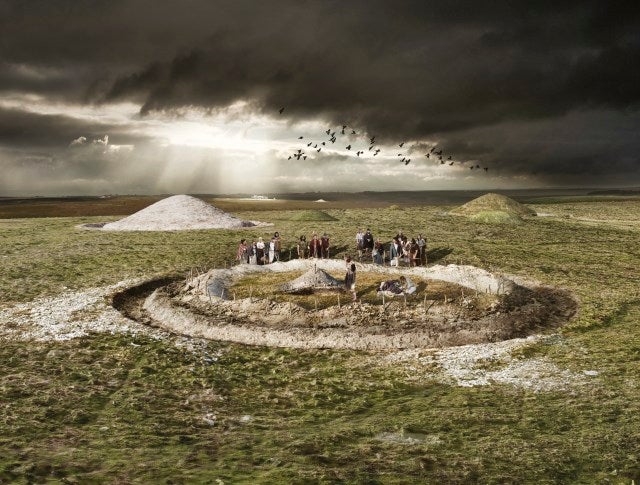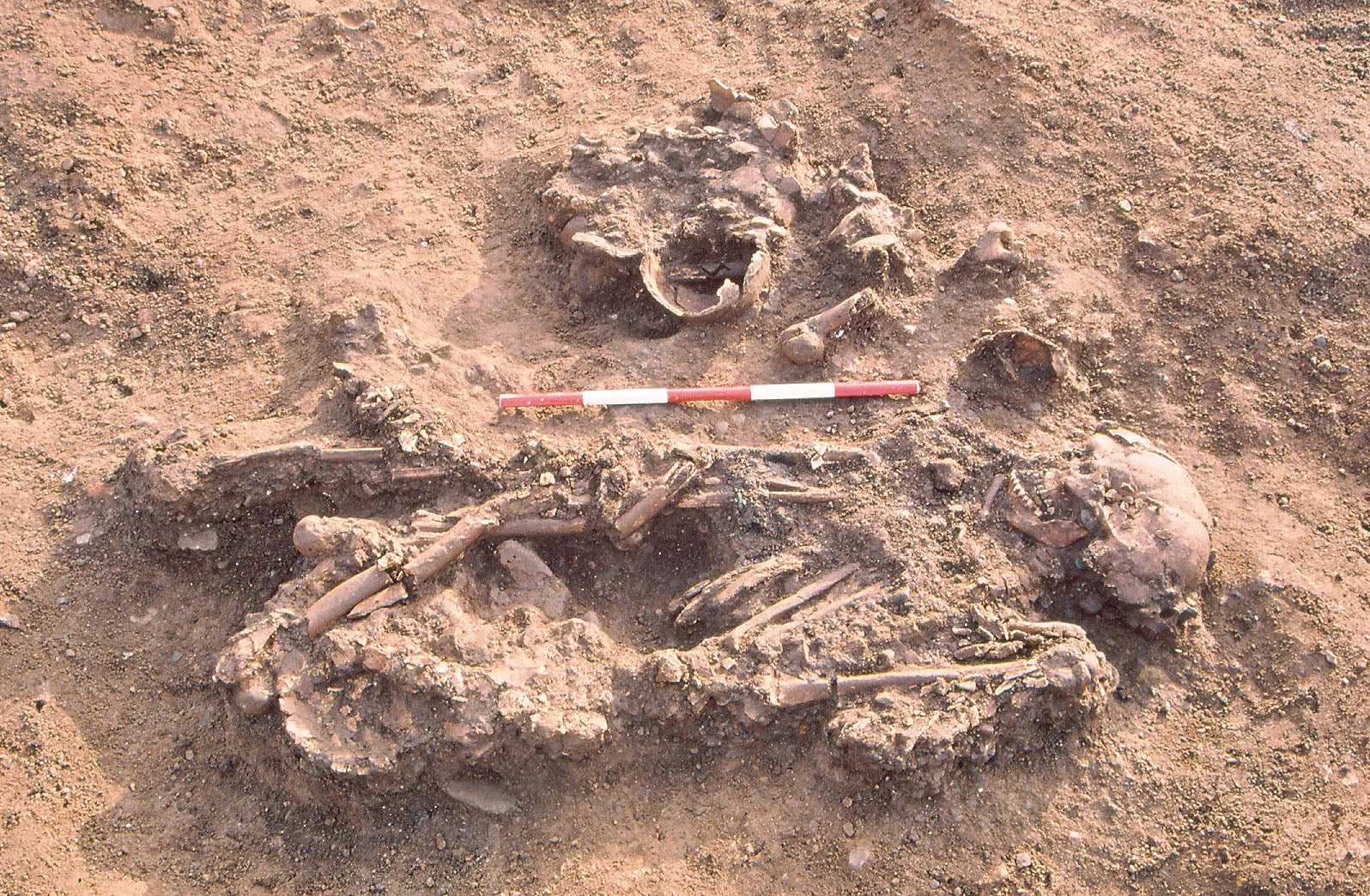Journey to the next world: How Bronze Age Britons saved dead bones of ancestors
New research reveals fascinating burial rituals that shed light on long-lost prehistoric belief systems, writes David Keys

Your support helps us to tell the story
From reproductive rights to climate change to Big Tech, The Independent is on the ground when the story is developing. Whether it's investigating the financials of Elon Musk's pro-Trump PAC or producing our latest documentary, 'The A Word', which shines a light on the American women fighting for reproductive rights, we know how important it is to parse out the facts from the messaging.
At such a critical moment in US history, we need reporters on the ground. Your donation allows us to keep sending journalists to speak to both sides of the story.
The Independent is trusted by Americans across the entire political spectrum. And unlike many other quality news outlets, we choose not to lock Americans out of our reporting and analysis with paywalls. We believe quality journalism should be available to everyone, paid for by those who can afford it.
Your support makes all the difference.Remarkable new research is revealing some of the long-lost secrets of British religion in the Bronze Age.
Data from a detailed archaeological study of unusual human remains suggests that Britons living in the early part of the era believed the souls of the dead could help people reach the afterlife.
The investigation, carried out by scientists at the University of Bristol over the past five years, has yielded information suggesting that particular Bronze Age individuals, near the ends of their lives, arranged to have themselves buried with a particularly unusual type of grave good – namely bones from potentially significant people who had died, in many cases, hundreds of years earlier.
The study is important because it is likely to generate unique new insights into long-lost prehistoric belief systems.
The investigation looked in detail at 32 British Bronze Age sites – including seven graves with relic bone grave goods – and found that, between them, they contained relic bones from at least 13 individuals, who had all died up to 450 years earlier.
The evidence suggests that, in many cases, the bones had come from long-dead individuals whose remains are likely to have been curated above ground (potentially in mortuary houses – or even as mummies) for many generations, before being selected as special grave goods to accompany a more recently deceased and potentially important individual to the next world.
Although the sample is small, the new evidence suggests that those Bronze Age individuals, allowed to use relic bones as grave goods, were often special or high-status people.
Of the seven graves identified as having relic bones, three belonged to individuals whose other grave goods were unusually impressive and were therefore almost certainly persons of high status. What’s more, two of those three people had relic bones from at least three or four often long-deceased individuals.
One probably high status 24th century BC man, who was buried at Boscombe near Stonehenge with a boar’s tusk, five arrowheads, various flint tools and eight decorated pots, was accompanied to the afterlife by the skulls and long-bones from at least four other people, one of whom had died 150-300 years earlier and two who had died up to 80 years earlier.
A 20th century BC woman, who was interred on Teesside with elaborate jewellery, consisting of 145 jet and copper beads and buttons (and two copper bracelets) was accompanied by relic skulls and limb-bones, belonging to a man and a woman who had died 60-174 years earlier – and a third skull from a child.

Another man, who was buried at Wilsford in the 18th century BC, was interred with a huge stone battleaxe, a bronze axe, a boar’s tusk, a mysterious two-pronged bronze object, an enigmatic bone plaque and an equally mysterious grooved stone – but was also accompanied by a whistle made from part of a relic leg bone, belonging to a person who had died up to 50 years earlier.
The other four graves had relic bones from just one or two individuals each – but (like the Teesside example), the relics were, in two cases, from children.
The data from the new study therefore suggests that children’s bones were being selected as accompanying relics for nearly half of the graves – and that, at a minimum, around a quarter of the individuals that the relic bones were from were children or even infants (most of whom had died many generations earlier).
Like the relic-producing adults, these often long-dead children’s remains were probably cared for above ground – in some cases for hundreds of years.
An 18th century BC woman was interred in East Yorkshire with absolutely no conventional grave goods – but accompanied by two bones from a 2-4 month old baby who had died 190-350 years earlier.
A 22nd century BC man was buried in East Lothian, Scotland with a flint knife, a flint scraper, a copper pin – and the skull, leg bone and pelvis of a 6-8 year old child who had died up to 60 years earlier.
The key scientific evidence suggesting that at least some Bronze Age human remains were kept and cared for above ground comes from sites as far apart as Dorset, Kent, Teesside and the Hebrides.
“Our research suggests that bones from often long-dead individuals were being curated by Bronze Age communities over considerable lengths of time,” said Dr Tom Booth who was carrying out research at London’s Francis Crick Institute biomedical research centre.
“These curated human remains, probably retained and preserved above ground for many years, were obviously of great importance to the people of that distant era,” he said.
The data from the new study is increasing archaeologists’ understanding of how life and death was viewed in Britain in the age of Stonehenge.
Burying people with grave goods has been common practice worldwide for much of human prehistory and history.
In the main, grave goods were placed in graves to help the deceased individual in his or her journey to the next world and to help sustain them when they got there.
In most ancient cultures (and indeed some surviving ones), the journey to the afterlife was regarded as long, arduous and challenging (often involving the person’s soul crossing seas, traversing deserts, ascending mountains, entering the gaping mouths of active volcanoes and journeying down miles of pitch black tunnels).

Grave goods were therefore provided specifically to help the deceased reach their otherworldly destination and to survive when they got there.
It’s therefore likely that human bone relic grave goods were provided to perform a similar function.
It is conceivable that people in the British Bronze Age may have reasoned, with some logic, that the souls of the curated relic-providing dead had already made that journey and that they would therefore be well-placed to guide the more recently deceased to that final destination. It might even be that the community’s care and curation enjoyed by those long-dead individuals would induce them to reciprocate by guiding important community members across unknown territory to the afterlife.
The use of infants and other children’s relics are perhaps of particular importance.
Throughout history, children have been regarded as morally and spiritually significant – specifically because of their innocence. Although there are no known historical or ethnographic parallels, it is conceivable that trying to enter the next world escorted by the bones of the innocent (and perhaps their protective spirits) might have been perceived as being regarded by the ancient lords of the underworld as a particularly valid “travel document”.
The newly researched data suggests that less than 10 per cent of adults chose (or were allowed) to be sent off to the next world equipped with or accompanied by relic bones.
However, by the 16th century BC, the relic bone grave goods tradition seems to have died out – but, from around 1500BC onwards, a new human relic bone practice seems to have developed.
From then until around 600BC, human bones (usually from adults who had died between 20 and 150 years earlier) were ritually buried in field boundary ditches, domestic animal watering places and under the entrance ways to houses. Their function was probably protective – perhaps representing the vigilant spirit of a field or house owner’s ancestor.
The new study examined around 25 examples of such middle and late Bronze Age non-funerary human relic bone deposits.
Earlier work, by several different scholars, also suggest that by at least 2500BC, some British Bronze Age communities were beginning to mummify key individuals.Indeed, it is conceivable that some of the relic bones, used as grave goods, might have come from disintegrating old mummies.
“The practice of mummification in Bronze Age Britain represents additional evidence for the above ground curation of human remains in that period,” said Dr Booth.
The new Bronze Age bone relic scientific research is published today in the UK-based archaeology journal Antiquity – and involved radiocarbon dating, CT scanning and microcomputed tomography.
“Although fragments of human bone were included as grave goods with the dead, they were also kept in the homes of the living, buried under house floors and even placed on display”, said the principal investigator on the project, Professor Joanna Bruck of University College Dublin and visiting professor at the University of Bristol’s department of anthropology and archaeology.
“This suggests that Bronze Age people did not view human remains with the sense of horror or disgust that we might feel today,” she said.
Join our commenting forum
Join thought-provoking conversations, follow other Independent readers and see their replies
Comments